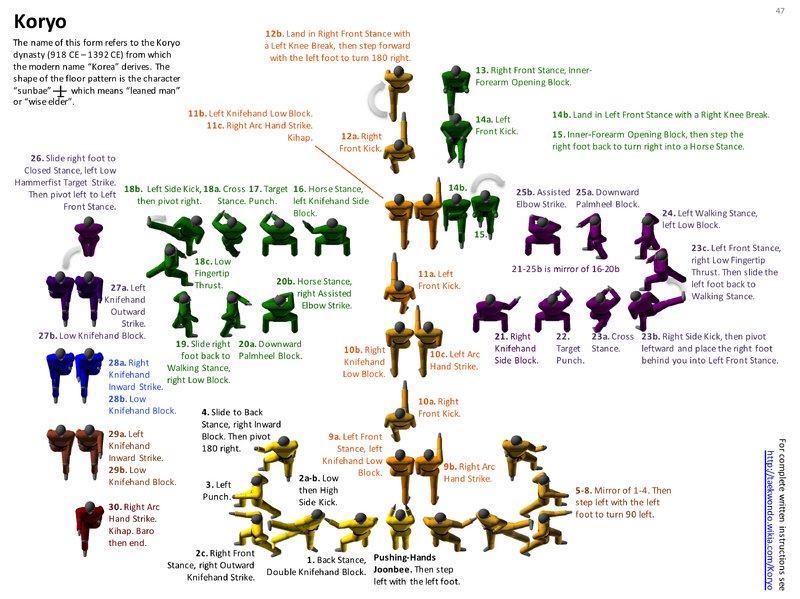Thank you sir! That video was shot in the school I attend (Majest Martial Arts in Sterling Virginia). The performer is Dong-Jin Kim, a former university poomsae champion in Korea -- I'm trying to recall, I think he competed for Kyung-Min University? He now teaches in Leesburg, Virginia. The person shooting the video (and the person who is heard speaking) is Seung-Min Choi, one of the earliest K-Tigers (he started with the K-Tigers in 1992), and former coach of the US Marine Corps taekwondo team. (As I write this, Master Choi is in Utah coaching our school's poomsae team at Nationals.) The person who edited the video and added the text is as handsome as he is talented.
There are tons of things I would do to make that series of videos better if I could (right now it covers only T1-8 + Koryo), but it's difficult to get all the right ingredients in the same place at the same time for long enough. If we make an update to that series of videos (which we have discussed doing) this time we'll try to shoot it in 4K, and from multiple angles. In the existing series of videos, it was a bit of a "rush job" on our part to get everything shot after the Saturday morning classes had finished but before the Saturday afternoon team practices began.
Majest <-- our YouTube channel
I'm also the author of this series of diagrams like the one show below, and I've had the same thought: if I only had the time (and the knowledge) it'd be nice to diagram all kata/poomsae/hyeung/teul in this style. Maybe someday when I retire from my day job, creating modern documentation of the all the kata/poomsae/hyeung/teul would make a fun retirement project.

